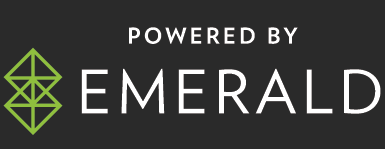By Gazmend Alushi, President of Measurement & Analytics, Whalar
We’ve long known Creators can drive awareness and cultural relevance, but what about hard ROI? In 2023, The Whalar Group commissioned Nielsen to conduct the first-ever Creator Media Mix Model (MMM) study, and the results were eye-opening: Creators delivered a 2.41x ROI from 2021–2022. While this is a great number on the surface, the questions started coming: why is it that high, and what were the levers contributing to that return? When we dug beneath the surface, the message was clear. Creator content isn’t just effective, it’s efficient, and here’s why:
- ROI increased by +38% y/y
- eCPM decreased by -35% y/y
- When brands ran Creator content simultaneously to their own, their ROI increased by +5.5%
So, what changed? The data showed that brands had increased the number of Creators they were using— they diversified their approach by working with more Creators across more platforms and tapping into new audiences. The result? Increased reach and stronger results.
This means that more research was needed to understand why increasing investment with Creators yielded greater returns and efficiency for marketers. We partnered with Alter Agents to run a Cross-Media Creator Study— a three-phase study in the U.S. and UK that included a mobile ethnography of social media users, an in-depth survey evaluating the connection and impact of Creators and their content, and in-depth interviews with Creators on how they build their followings. And the results were fascinating:
- 77% of consumers say they’re first introduced to brands through Creators
- 3-in-4 purchase products based on Creator recommendations
- The top two reasons consumers watch Creator/brand partnership content? To learn more about the product/service and how to use it, and also to get an honest and trustworthy review.
But then we get to the heart of the issue: which platform do we prioritize? Where do we put all our eggs? The correct answer is, you should never put all your eggs in one basket, of course. 85% of people follow Creators on multiple platforms, and 57% expect unique content at each touchpoint. To put it simply, if a Creator posts a 30-second Reel or TikTok about a new YouTube video they just posted, people want to go to the correct platform to watch it; they’re not looking for a one-stop shop.
Now, what people say and what they do are two very different stories, as any seasoned analytics practitioner will tell you. So, how do we properly decompose the creative effectiveness of these Creator campaigns? In a recent meta-analysis utilizing Kantar’s Link AI solution, it was found that 62% of Creator content scored 80th percentile and above for both brand power AND short-term sales likelihood, surpassing Kantar’s creative performance benchmarks. Traditionally, you would expect either strong branding or performance, but the study revealed that when Creators introduced a brand AND gave a clear call to action, the content’s performance increased on BOTH branding and short-term sales likelihood measures … something brands can struggle to achieve
But the insights went even deeper than that. When Creators showcased themselves using the product and explained why they liked it (using a face wipe to remove makeup, using a mobile app to book a trip, and even practicing proper oral hygiene), this content was at the absolute top of the list and outperformed all other content.
Now, it’s always fun to talk about what worked (and how well it worked), but the learnings didn’t stop there. The content where Creators had to follow strict brand guidelines and couldn’t be creative … didn’t exactly do the best.
All of this leads to a simple truth: Creator content is often the hardest-working line item in the media mix. But to unlock its full potential, it must be measured with the same rigor as any other media channel.
That’s where we need to evolve. The Creator Economy is no longer a side bet. It’s not influencer marketing 1.0. It’s a foundational media channel that deserves its own benchmarks, measurement tools, and creative freedom.
Creators are not just amplifiers of culture, they are efficient, scalable, and sales-driving partners. And the data proves it. But only if we treat them like the media force they’ve become and measure them accordingly.








